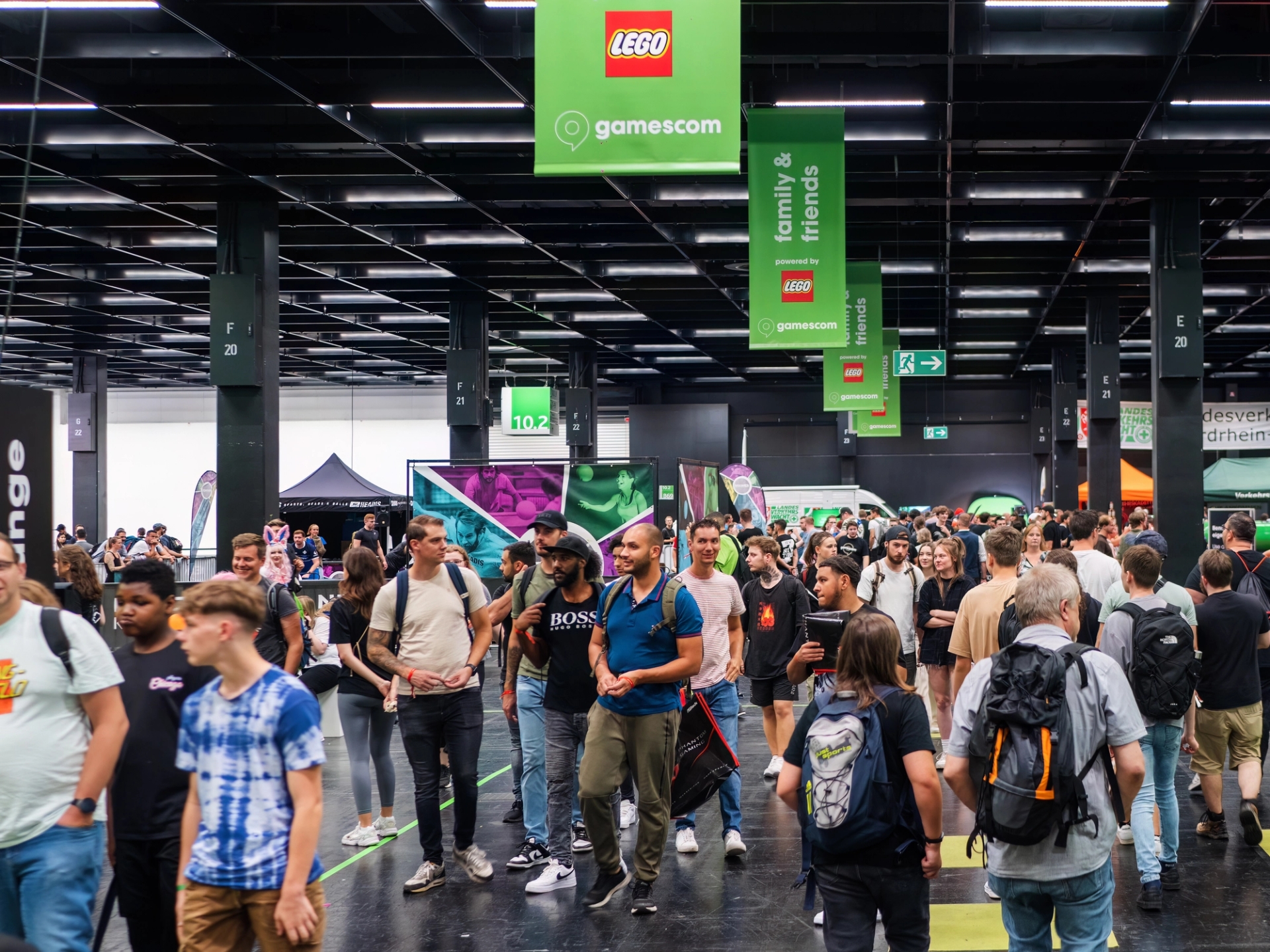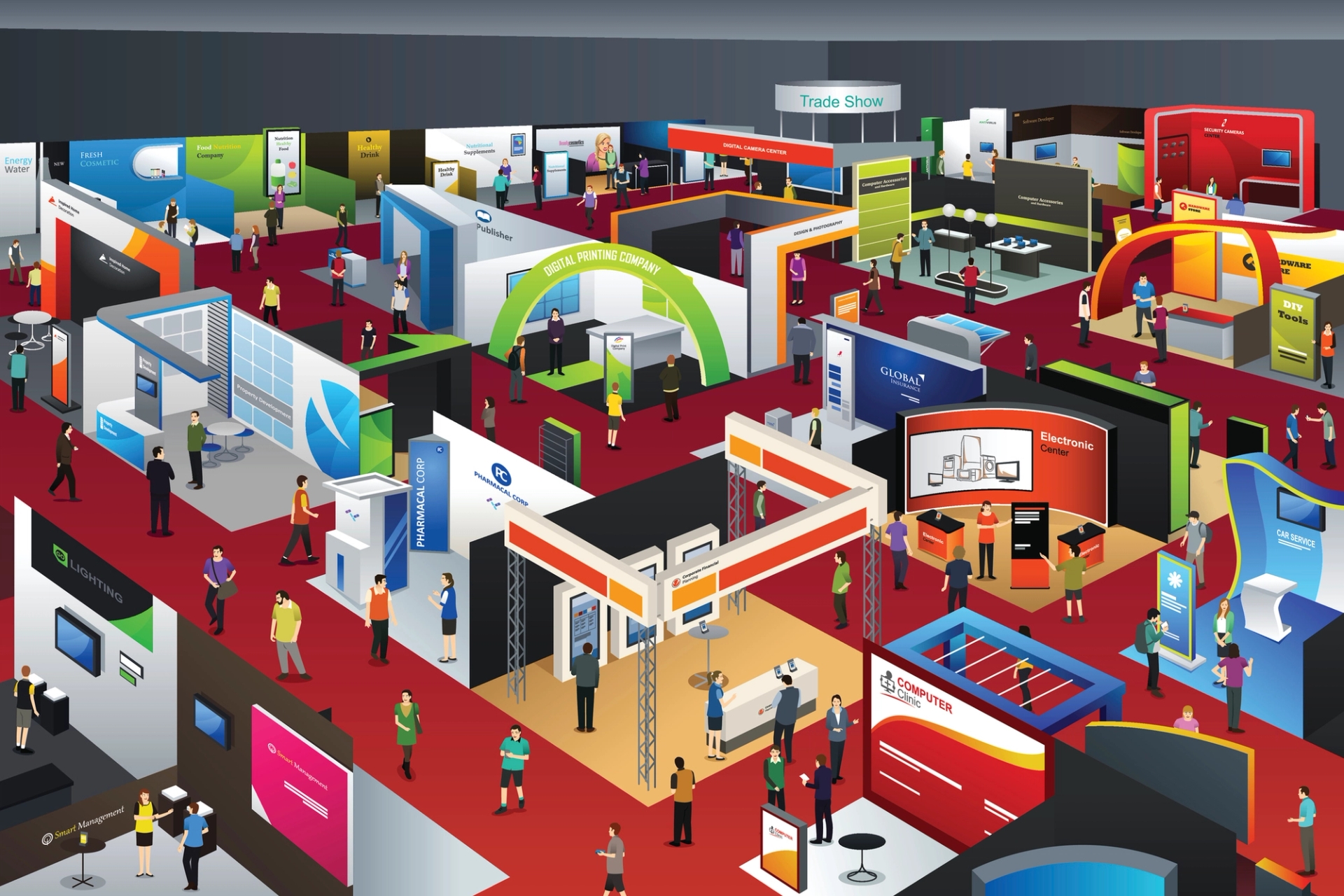The Ultimate Guide to Trade Show Planning in 2025
Master your next event with essential tips and best practices for successful trade show planning. Read the guide to elevate your trade show strategy!

Planning a trade show in 2025 involves more than booking booth space and printing brochures. With evolving technology, higher attendee expectations, and intensified competition, a strategic and data-driven approach is required to make trade shows a success.
This guide walks you through every phase of the trade show planning process, from pre-event marketing to post-event follow-up.
Whether you're a seasoned event manager or planning your first trade show, this blog is your complete trade show planning guide—packed with actionable tips, tools, and proven strategies.
Introduction:
Trade shows in 2025 are high-impact opportunities for lead generation, brand awareness, and building relationships with potential customers. Planning it requires aligning business objectives, defining your target audience, and using smart event tech tools.
With the right trade show strategy, you can elevate your booth traffic, attract attendees, and boost your trade show performance.
Key Takeaways From The Blog:
- Trade shows remain essential trade events for B2B industries.
- Planning must consider booth design, event technology, and marketing strategy.
- Trade show success in 2025 hinges on personalization, data, and hybrid experiences.
Setting Clear Trade Show Objectives
Start by aligning trade show objectives with broader business goals. Are you launching a product? Generating leads? Strengthening relationships with industry professionals or existing clients?
Questions to Ask:
- What metrics define a successful trade show for us?
- Are we targeting brand visibility, lead capture, or sales leads?
- Who are our key stakeholders and how can they support our goals?
This clarity helps streamline your trade show marketing plan along with event planning timelines.

Building a Trade Show Planning Timeline
Successful trade show planning depends on careful planning. You must start at least 6–9 months ahead. Prepare a well researched trade show planning checklist and template (Excel or digital) and make the best out of your efforts.
Include:
- Pre event planning: goals, budget, logistics
- Mid-planning: promotional materials, booth layout, staff training
- Final stretch: lead capture tools, giveaways, and shipping
- Use event technology and trade show planning software to track deadlines
Download: Azavista’s Trade Show Planning Template →
Budgeting and Estimating Trade Show Costs
A successful event hinges on realistic budgeting. Account for trade show costs including booth space, design, travel, promotional materials, giveaways, and pre-show marketing efforts.
Tips:
- Set aside 25–30% of your budget for marketing campaigns
- Include booth traffic-driving features (e.g., interactive demos, digital screens)
- Factor in trade show logistics planning and show floor charges
Read more: Maximizing ROI: Budgeting Strategies for Successful Trade Shows →
Choosing the Right Event Venue and Booth Space
Choosing the right location on the trade show floor is critical for your trade show success. It directly influences booth visibility, booth traffic, and the number of booth visitors you attract.
A strategically placed trade show booth can significantly enhance your ability to meet your trade show objectives, from lead generation to brand visibility.
Here’s what to consider when selecting your booth space:
1. Study the Trade Show Floor Plan in Advance
Carefully analyze the trade show floor plan—including layouts from past shows like the CHAMPS trade show floor plan—to identify high-traffic zones. Look for entrances, exits, lounges, food courts, and speaker session areas where attendees tend to gather or pass frequently. These are prime booth locations for high visibility.
Tip: Avoid dead-end corners or spaces far from main thoroughfares unless your booth design is highly interactive and can pull people in.
2. Proximity to Competitors or Strategic Partners
Being located near industry peers or key stakeholders can work in your favor or against you:
- Near competitors? Your booth needs a standout booth layout and engaging booth activities (like interactive demos) to differentiate your presence.
- Near partners or complementary brands? Great for shared traffic and networking opportunities. Coordinate pre-show marketing efforts to promote your clustered presence as a value zone for potential customers.
3. Evaluate Physical Space and Functionality
Consider the physical space not just in square footage but in flow and purpose:
- Can you include areas for product displays, meetings, or interactive demos?
- Is there enough room for your sales team to engage visitors without congestion?
- Can you incorporate visually appealing marketing materials and signage that align with your brand awareness goals?
Pro Tip: Use a trade show planning template or trade show planning software to visualize your booth layout before committing. Some platforms allow you to create custom trade show booth planning mock-ups or even simulate booth traffic scenarios.
4. Align Booth Location with Strategic Goals
Your booth location should support your broader trade show marketing strategy and business objectives. For example:
- Launching a new product? Aim for a central, high-traffic area.
- Focused on VIPs or high-quality conversations? A quieter corner near a lounge may allow for deeper engagement.

Designing a Visually Appealing and Engaging Booth
A strong booth design does more than look good—it drives booth traffic, supports lead generation, and positions your brand for trade show success.
To make the most of your booth space and create a truly engaging booth, consider these essentials:
- Strategic Layout: Position key elements like demo stations, seating, and product displays to guide visitor flow. Keep entrances open and avoid placing large objects at the front that block views from the trade show floor.
- High-Impact Visuals: Use large, bold graphics with a clear value proposition. Ensure your marketing materials and booth visuals align with your overall trade show marketing strategy and target audience expectations.
- Integrated Lead Capture: Make it easy for booth visitors to share their info using QR codes, tablets, or badge scanning tools. Tie these into your CRM or event technology stack for seamless post event follow up.
- Interactive Experiences: Add product demos, touchscreens, or AR/VR elements to keep visitors engaged. These tools don’t just entertain—they educate and help generate leads through deeper engagement.
- Comfort & Accessibility: Include seating or lounge areas to encourage longer interactions and give your sales team a relaxed space to build rapport. Good lighting, clean design, and accessibility also go a long way.
Want detailed examples, visual inspiration, and expert design tips? Check out our guide:
How to Design a Trade Show Booth That Attracts and Converts in 2025
Pre Show Marketing Efforts and Promotional Materials
Don’t wait for the show floor to open—successful trade show planning begins weeks in advance. Effective pre-event marketing helps you connect with your target audience, schedule meetings, and drive booth traffic.
Here’s how to build pre-show buzz:
- Email Sequences & Landing Pages: Send targeted emails with clear CTAs linking to a landing page where attendees can book meetings, download your promotional materials, or register for live demos.
- Targeted Ads on LinkedIn & Google: Run geo- and industry-targeted ads highlighting your booth space, demo offers, or giveaways. This builds brand awareness and drives qualified booth visitors.
- Personal Invites with Value: Reach out directly to key potential customers and partners. Offer incentives like early access, VIP gifts, or private consultations tied to their business needs.
Make sure everything aligns with your trade show marketing plan, and position your brand as a must-visit stop on the trade show floor.
Engaging Attendees and Standing Out on the Trade Show Floor
Maximizing your trade show presence means creating memorable experiences that encourage attendee engagement and draw visitors to your trade show booth. Engaged visitors are more likely to become qualified sales leads and help generate positive media coverage.
Try these tactics:
- Host Mini-Presentations or Contests: Short, informative talks or fun competitions can capture attention and keep visitors lingering longer. Focus on topics or prizes that resonate with your target audience to drive relevance and interest.
- Offer Charging Stations or Coffee Lounges: These comfort features create natural gathering spots, encouraging conversations between your sales team and booth visitors while subtly extending the time attendees spend near your booth.
- Add Interactive Demos: Hands-on experiences or tech-powered demos—like AR/VR or live product trials—engage attendees actively and highlight your brand’s innovation. These demos should be tailored to solve specific pain points for your potential customers.
Engaging booths not only increase booth traffic but also improve your trade show marketing results by boosting brand recall and attracting industry press.

Lead Capture and Real-Time Trade Show Performance Tracking
Capturing new leads efficiently and monitoring your booth’s performance during the event are critical components of successful trade show planning. Leveraging event technology enhances these processes, making your efforts measurable and actionable.
Effective lead capture methods include:
- Mobile Apps and QR Codes: Allow easy and contactless sharing of attendee information, improving data accuracy and speed.
- Integrated CRM Systems: Sync lead data directly into your customer relationship management software to streamline post event follow up and nurture campaigns.
Monitor your trade show performance in real time by tracking:
- Leads per Hour or Day: Identify peak times to allocate sales team resources effectively.
- Hot Leads vs. General Interest: Prioritize follow-ups based on lead quality to maximize trade show ROI.
- Staff Performance and Booth Traffic Heatmaps: Use analytics to understand which areas of your booth layout attract the most attention and how your team is performing on the floor.
Learn more about using technology to boost trade show results in our blog:
Leveraging Technology in Trade Show Planning
Post Event Follow Up and Future Trade Shows
Your trade show success depends heavily on what happens after the event. Post event follow up is where you convert leads into customers, deepen relationships, and set the stage for future trade shows.
Key actions to maximize post-show impact:
- Send Thank-You Emails Within 24 Hours: A prompt, personalized thank-you message reinforces positive impressions and keeps conversations warm.
- Segment Leads and Share with Sales Team: Organize leads by interest level, industry, or buying stage to ensure targeted and effective outreach.
- Use Automated Tools for Ongoing Engagement: Marketing automation can nurture leads through drip campaigns, event invitations, or product updates, maintaining brand visibility and momentum.
Track your overall trade show performance and use insights to improve your planning process for the next event. Regularly updating your strategies based on results ensures continuous improvement and business growth.

Summary: Making Your Trade Show a Success
Trade shows remain powerful platforms for industry peers to connect, brands to shine, and companies to grow. With proper planning, engaging booth design, effective lead generation, and smart follow-up, you can ensure trade show success that moves your business forward.
Final Tips:
- Use trade show planning software for real-time updates
- Align marketing materials with your brand identity
- Always measure trade show ROI
- Build relationships with potential clients through networking opportunities
More Event Planning












